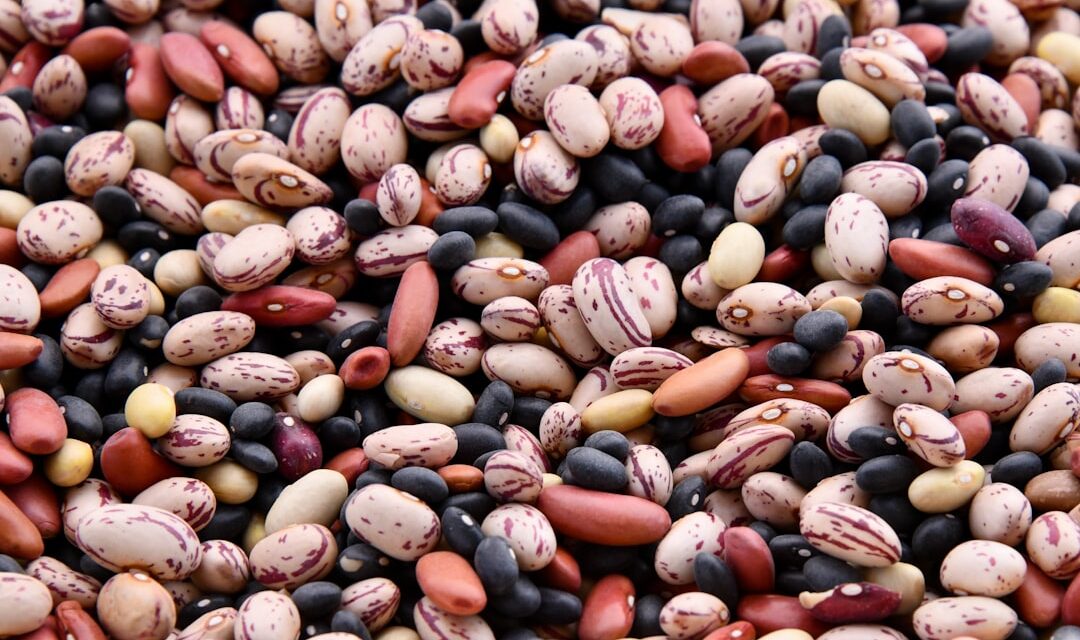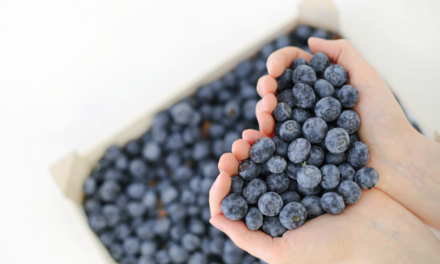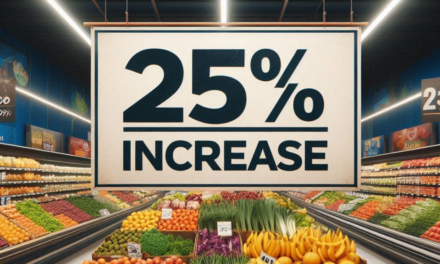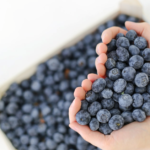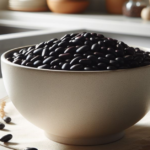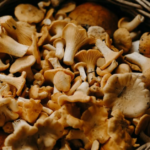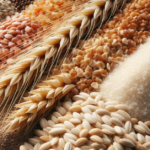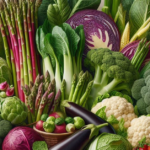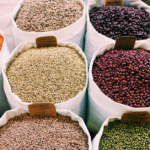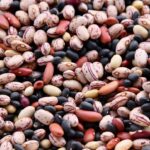Hey fellow diabetics, have you fully embraced the potential of beans in our pursuit of better control over our blood sugar levels? These nutrient-rich powerhouses, loaded with fiber, protein, and a wide array of essential vitamins and minerals, provide a tasty and flexible method to regulate blood sugar levels and support overall well-being.
For those of us who love beans, there is a world of flavorful possibilities that range from creamy cannellini beans to the heartiness of kidney beans. In this article, I will discuss why we should consider incorporating these humble legumes into our daily diet and provide easy tips on how to include them in delicious and healthy meals that won’t cause blood sugar spikes.
Introducing beans into a diabetic eating regimen can aid in controlling blood sugar and promoting overall well-being. The combination of fiber, protein, and low glycemic index in beans makes them a valuable addition to a diabetes-friendly diet. For example, kidney beans, black beans, and chickpeas are among the best beans for people with diabetes due to their high fiber, protein, and essential nutrient content.
By incorporating beans into meals, people with diabetes can enjoy a rich source of fiber, plant-based protein, and nutrients that support their well-being. Additionally, the low glycemic index of beans makes them a suitable choice for managing blood sugar levels effectively, reducing the risk of sudden spikes and crashes.
Low Fat, Healthy Fiber and Essential Minerals
In addition to being low in fat, beans are rich in fiber, supporting digestive health and aiding in weight management. The essential minerals found in beans, such as iron and potassium, play a crucial role in promoting overall health and well-being. It’s important to note that the high fiber content in beans not only supports digestive health but also helps individuals feel full and satisfied after meals, which can aid in weight control.
The fiber content in beans helps regulate blood sugar levels and reduce the impact of high glycemic index foods on glucose levels. Beans are a complex carbohydrate that provides a steady supply of glucose, supporting stable energy levels throughout the day. By incorporating beans into our diets, we can enjoy a nutrient-dense food that offers a range of health benefits beyond blood sugar control.
Beans, Beans, Beans. Some of the Better Ones
Black beans, for example, are rich in antioxidants, which can help reduce inflammation and lower the risk of chronic diseases.
Chickpeas, also known as garbanzo beans, are high in folate, an essential nutrient for cell growth and repair.
Pinto beans, on the other hand, are a good source of magnesium, which plays a vital role in regulating blood sugar levels and blood pressure.
Another example of a beneficial bean for diabetes is kidney beans, known for their high fiber content and low glycemic index, making them a great choice for managing blood sugar levels.
It is worthwhile to take into account the different nutrients that each type of bean offers when choosing which ones to incorporate into our diets. For instance, different beans provide varying amounts of fiber, protein, vitamins, and minerals that can support various aspects of diabetes management.
However, as we all know, it’s easier said than done. Few of us have either a quick reference guide to bean nutrition or the time to dig into this. I guess the point here is we should know there are differences, and it could be worth exploring the varieties of beans available to us. Watch for future posts about different varieties of beans, with information about the nutritional content of each one.
Soluble and Insoluble Bean Fiber
Soluble fiber in beans can help lower cholesterol levels, reducing the risk of heart disease, a common complication of diabetes. Diets high in fiber, like those incorporating beans, are associated with a lower risk of developing type 2 diabetes.
Insoluble fiber in beans adds bulk to the stool, promoting regular bowel movements and preventing constipation.
Adding beans to the diet can provide individuals with diabetes with the dual benefits of soluble and insoluble fiber, supporting both their glycemic control and digestive health. The fiber content in beans can help individuals feel full and satisfied, reducing the likelihood of overeating and supporting weight management efforts.
Protein in Beans and Its Importance
The protein found in beans is a valuable plant-based source that is often lower in saturated fat compared to animal proteins, supporting heart health. Including a variety of protein sources, such as beans, in a diabetic diet can help maintain muscle mass and prevent malnutrition. For example, beans provide an excellent source of protein that is essential for tissue repair, immune function, and overall health in individuals with diabetes.
Protein from beans also contains essential amino acids necessary for building and repairing tissues, supporting immune function, and maintaining muscle mass. Plant-based proteins like those found in beans are associated with lower levels of saturated fat, which can help reduce the risk of heart disease in individuals with diabetes.
Understanding the Low Glycemic Index of Beans
As diabetics are well aware, foods with a low glycemic index can help us feel fuller for longer periods, aiding in weight management. Consuming low-GI foods like beans can reduce the risk of sudden blood sugar spikes and crashes, promoting stable energy levels throughout the day.
The low glycemic index of beans means they are digested and absorbed at a slower rate, leading to a gradual rise in blood sugar levels and sustained energy release. This is beneficial for maintaining stable blood sugar levels, especially for individuals with diabetes or those looking to manage their weight.
The slow digestion and absorption of beans also contribute to a feeling of fullness and satiety, which can aid in controlling appetite and preventing overeating. Additionally, the sustained energy release from beans can provide a steady source of fuel for physical activity and help improve athletic performance. The low glycemic index of beans makes them a favorable choice for promoting overall health and well-being.
Including Beans in Your Diabetic Eating Plan
The versatility of beans allows for various culinary preparations, making it easier to incorporate them into different meals and snacks. Regularly consuming beans as part of a diabetic eating plan can contribute to improved glycemic control and reduced insulin resistance. For instance, individuals with diabetes can enjoy beans in salads, soups, and stews to add texture, flavor, and nutritional value to their meals, making them more satisfying and wholesome.
When incorporating beans into a diabetic eating plan, it’s important to consider the various ways in which these legumes can be enjoyed to promote overall health and well-being. Beans can be used in a wide range of dishes, from salads and soups to main courses and snacks, allowing individuals with diabetes to enjoy a diverse and flavorful diet.
Here are some ways beans can be incorporated into diabetic-friendly preparations:
1. Bean-based soups and stews: Add beans like kidney, black, or lentils to vegetable, chicken, or beef-based soups and stews for added protein, fiber, and thickness.
2. Bean salads: Toss cooked beans like chickpeas, black beans, or kidney beans with fresh veggies, herbs, and a vinaigrette dressing for a filling and nutritious salad.
3. Bean dips and spreads: Purée beans like chickpeas (hummus), black beans, or white beans with spices and olive oil for a protein-rich dip or spread for vegetables or whole-grain crackers.
4. Bean-based veggie burgers: Mash or blend beans like black beans or lentils with vegetables, whole grains, and spices to make veggie burger patties.
5. Bean-based chili: Use a combination of beans like kidney, black, or pinto beans as the base for a hearty, high-fiber chili.
6. Bean-based tacos or burritos: Use mashed or whole beans as a filling for tacos or burritos, along with veggies and lean protein.
7. Bean-based pasta dishes: Toss cooked beans with whole-grain pasta, veggies, and a light sauce for a balanced meal.
8. Bean-based side dishes: Serve cooked beans like lima, kidney, or black beans as a high-protein, high-fiber side dish.
The key is to choose beans with no added salt or sugar, and pair them with other nutrient-dense ingredients like vegetables, whole grains, and lean proteins for a well-rounded, diabetes-friendly meal.
Preparing Beans for Optimal Nutritional Benefit
Soaking beans before cooking can help reduce their phytic acid content, improving mineral absorption in the body. Cooking beans thoroughly is essential to break down complex carbohydrates and make the nutrients more readily available for absorption.
Pairing beans with vitamin C-rich foods, such as bell peppers or tomatoes, can enhance the absorption of iron from beans, supporting overall nutritional intake.
To maximize the nutritional value of beans, it is crucial to explore different methods that can boost their nutrient content and make them easier to digest. Different cooking methods, such as steaming, boiling, or pressure cooking, can affect the nutrient composition of beans and their overall digestibility.
By choosing appropriate preparation techniques and pairing beans with complementary foods, individuals can ensure they obtain the full range of nutrients beans have to offer, supporting their health and well-being. Incorporating beans into a variety of dishes and recipes can go a long ways in helping you enjoy the nutritional benefits of these legumes while adding flavor and texture to your meals.
Conclusion: Beans as a Staple in the Diabetic Diet
In conclusion, fellow diabetics, embracing the power of beans in our diets can be a significant change in our journey toward better blood sugar control and overall well-being. These humble legumes, packed with fiber, plant-based protein, and a wealth of essential nutrients, offer a delicious and versatile solution to managing our condition.
While incorporating beans into our meals may seem like a small step, it can have a profound impact on our health. So, let’s get creative in the kitchen, experiment with different bean varieties and preparation methods, and savor the flavors and benefits that these nutrient-dense powerhouses have to offer. Together, we can harness the potential of beans and make them an integral part of our diabetic-friendly eating plan, one satisfying and nourishing bite at a time.
Go here to see a list of beans, peas and lentils to consider adding to your diet.
###
Remember, proactive self-care matters. Every step we take, every decision we make to better manage our diabetes makes a difference in how well and how long we live. Choose wisely. Live long, love life and be well.
The information on this site is not intended or implied to be a substitute for professional medical advice, diagnosis or treatment. The information on this site is for informational purposes only and is not intended to diagnose, treat, or cure any type of disease or condition. Diabetes Control Today does not guarantee any results for your specific situation. In support of our website, we may share resources offered by trusted partners. If you purchase products from any of these partners, the owners of this site may receive a portion of the proceeds. These affiliations allow us to continue bringing you valuable, potentially life-changing content.

